Orange
Citrus Blackfly
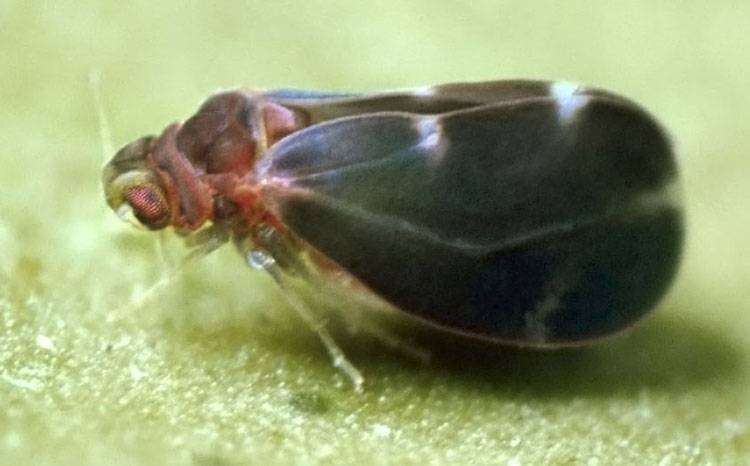
Citrus Blackfly
Aleurocanthus woglumi
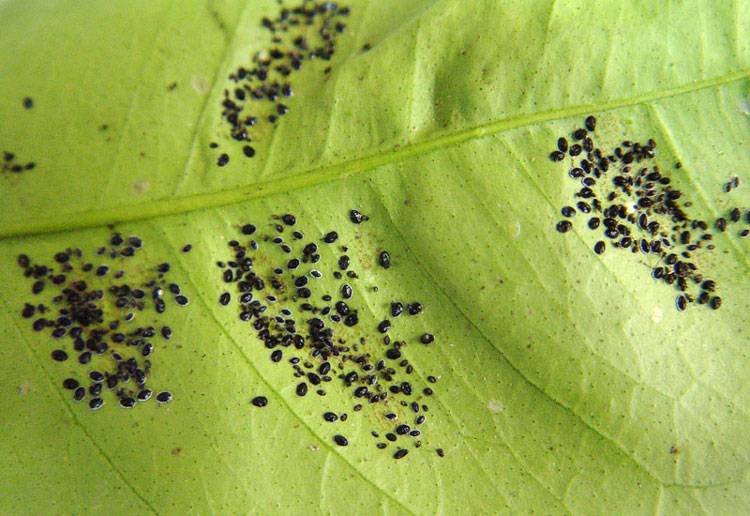
Citrus Blackfly
Aleurocanthus woglumi

Citrus Blackfly
Aleurocanthus woglumi
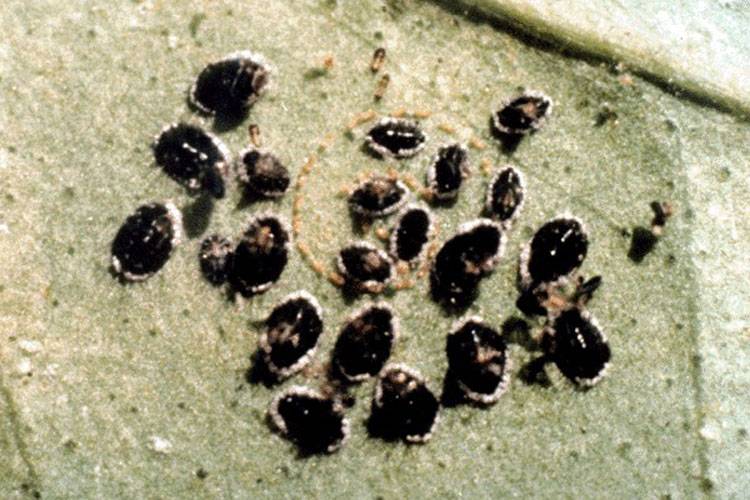
Citrus Blackfly
Aleurocanthus woglumi
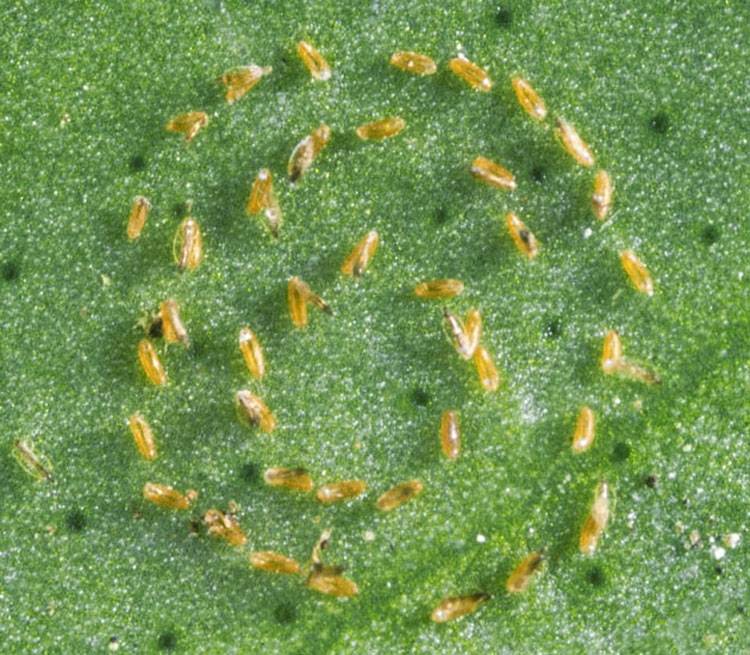
Citrus Blackfly
Aleurocanthus woglumi
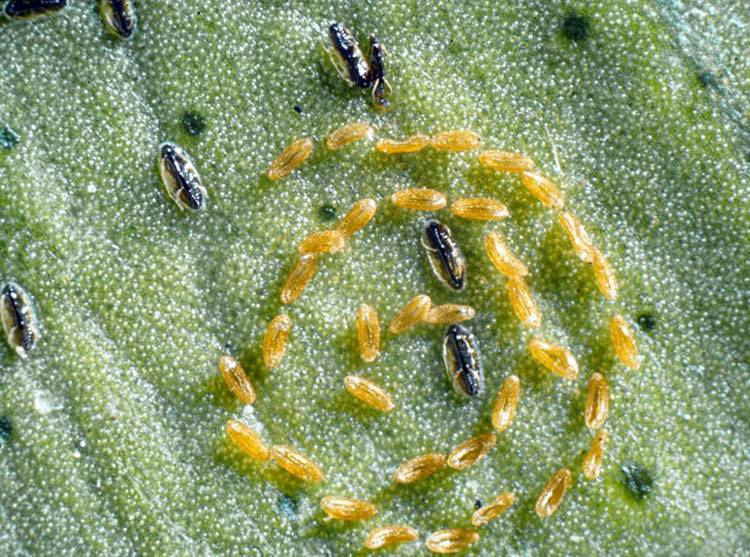
Citrus Blackfly
Aleurocanthus woglumi
1. Seasonal Abundance (2015–16 Field Study Findings)
-
Adult population peaks per leaf:
-
July (1st & 2nd fortnight): 3.5 and 4.5
-
December (1st & 2nd fortnight): 4.75 and 4.00
-
April (2nd fortnight): 4.75
-
May (1st fortnight): 5.00
-
Absent during remaining months.
-
-
Nymph population peaks per leaf:
-
July (1st & 2nd fortnight): 32 and 34.5
-
Lowest: June (1st fortnight): 6.25
-
-
Egg spirals (per 5 leaves):
-
Highest: December (2nd fortnight) – 14.25
-
Also notable: June – 12.5; March – 10.63
-
Lowest: October (2nd fortnight) – none; November (1st & 2nd) – 0.25 and 0.5
-
2. Environmental Correlations
-
Temperature:
-
Positive correlation with nymph and adult populations.
-
-
Relative Humidity (RH) & Rainfall:
-
Negative correlation with nymph and adult populations.
-
-
No significant relation between environmental parameters and egg incidence.
3. Life Cycle & Morphology
-
Egg stage:
-
Laid in spirals on undersides of young leaves, 35–50 per batch
-
Hatch in 4–12 days depending on conditions
-
-
Larval stages:
-
1st instar: mobile, dusky, with dorsal glandular spines
-
Later instars: sessile, dark with spines and wax, stacked exuviae
-
3rd instar: black with green anterior spot
-
-
Pupal stage (4th instar):
-
Females: ~1.25 mm; males: ~1.0 mm
-
Black with many dorsal spines and a waxy fringe
-
Used for species identification
-
-
Adult:
-
Females larger (1.7 mm) than males (1.33 mm)
-
Dark-grey wings (with metallic sheen); orange to red body initially, darkens later
-
4. Host Range & Polyphagy
-
Polyphagous; prefers citrus
-
Recorded on 75–169 plant species from 38–69 families
-
Can persist on mango (Mangifera indica) for multiple generations
-
Infestation on non-citrus is limited to 3 generations, rarely causes serious damage away from citrus
5. Symptoms of Infestation
-
Sticky honeydew → leads to black sooty mold
-
Leaf distortion
-
Presence of black spiny lumps on leaf undersides
-
Ants often attracted to honeydew
6. Development & Generations
-
Tropical climate: All stages present year-round; reproduction halts in cold
-
Development durations:
-
Egg: 11–20 days
-
Instars: 7–16, 5–30, 6–20 days
-
Pupal stage: 16–80 days
-
Adult lifespan: 6–12 days
-
-
Life cycle: 2–4 months
-
Generations/year: 3–6
-
High mortality: Up to 77.5% in development
7. Environmental Preferences & Limits
-
Optimal temperature: 28–32°C
-
Optimal RH: 70–80%
-
Development threshold: 13.7°C
-
Cannot survive:
-
Below 0°C
-
Above 43°C
-
8. Management Implications
-
Target peak periods: April–May, July, and December for control measures
-
Monitor nymph and adult activity as it aligns with temperature trends
-
Avoid excessive irrigation during these months to reduce RH-related risk factors
-
Natural enemies: Their activity is density-dependent on pest populations, hence conserving them during pest surges may help in biological regulation
Source: CABI
